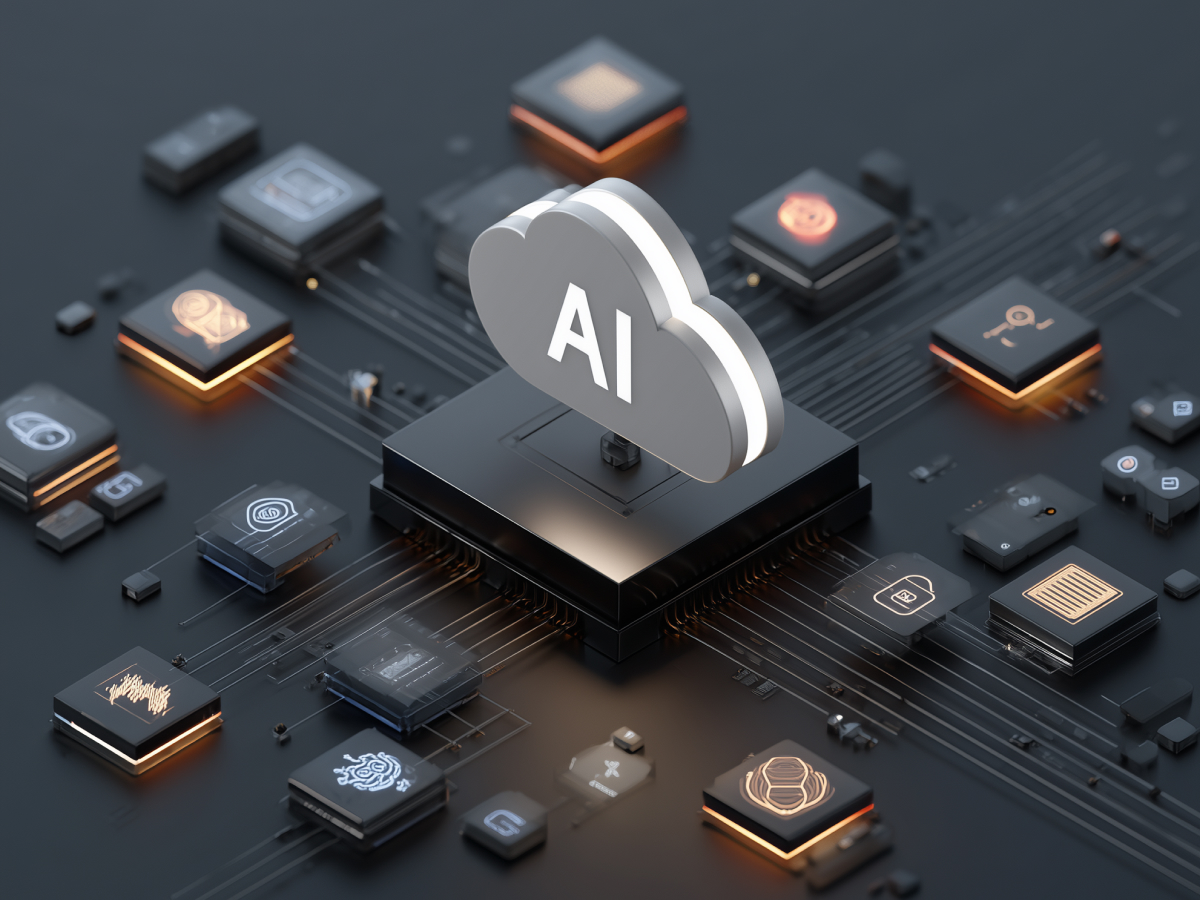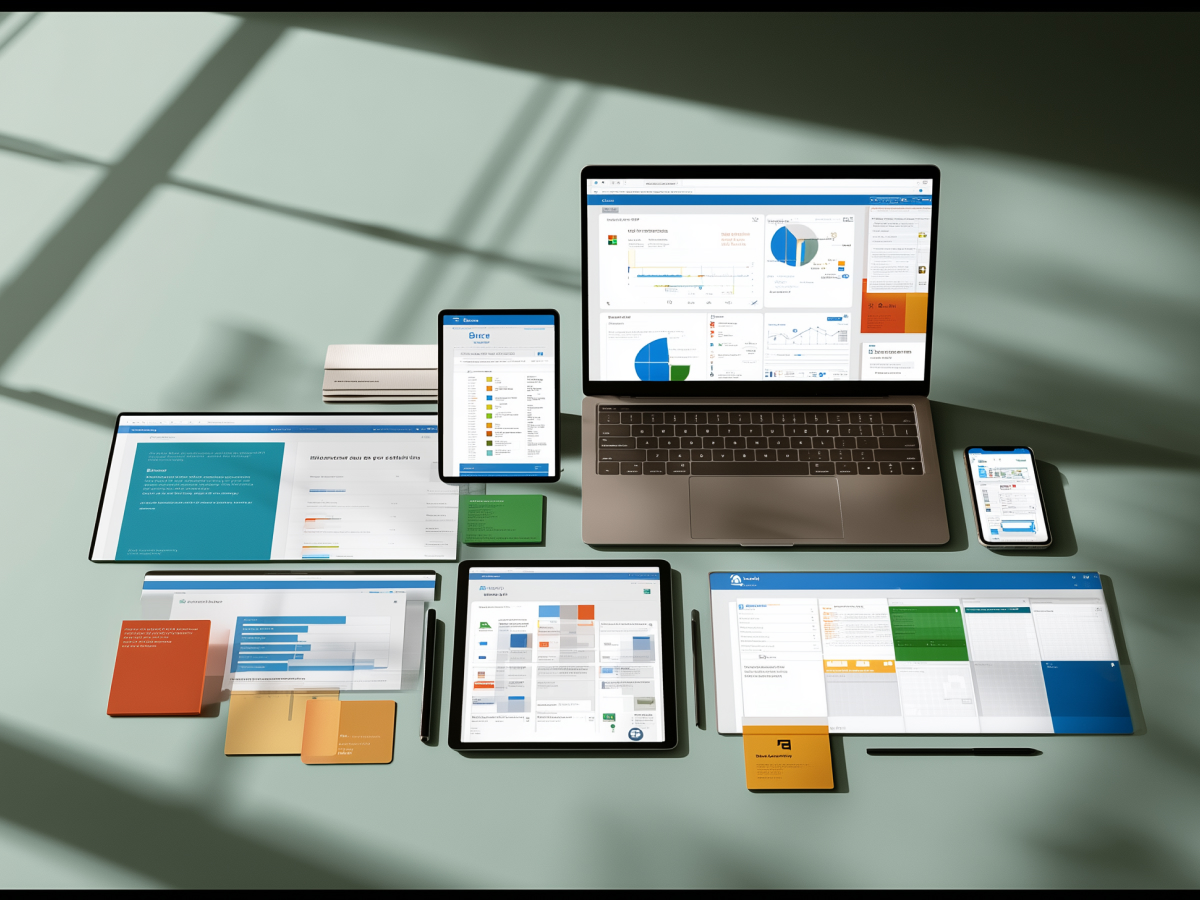LinkedIn’s embedding of AI in distributed cloud-native architecture
LinkedIn is quietly building something meaningful, layering artificial intelligence into the foundation of its tech stack. Unlike standalone tools or flashy demos, what LinkedIn is doing speaks directly to scale, utility, and long-term value.
The key move here is integrating AI as a native layer within its distributed cloud architecture. This isn’t a bolt-on capability. It’s AI working alongside data pipelines, security models, and service layers, functioning like any native component in a modern software system. In practice, that means AI can filter information, summarize large data sets, convert speech, and even translate language, all as part of LinkedIn’s existing infrastructure.
AI isn’t being treated as a novel toy. It’s treated as a first-class function, an essential tool in the stack. This moves LinkedIn out of the sandbox and into full-scale enterprise deployment. You get adaptability, lower friction for internal development, and faster delivery of AI-powered features across a global platform.
For C-suite leaders, especially in large enterprises, the takeaway is simple: embed AI where it makes sense, don’t build around it. Connect it directly to workflows and data you already trust. This allows AI to scale with your systems, not stand apart as a proof of concept. Done right, AI becomes a force multiplier.
Leveraging traditional software patterns via messaging and APIs
LinkedIn’s AI capabilities rest on solid ground, established engineering patterns that have stood the test of time. Messaging systems and APIs are the foundation here. Instead of reinventing everything, they’re adapting what already works and expanding it with intelligent capabilities.
The team deploys agents, AI-driven modules, using messaging architectures. Messages run between services with structured or semi-structured data. That lets agents understand and respond based on ongoing interaction history. Context isn’t lost. If a recruiter wants to shift a search from “San Francisco” to “London,” the system already understands the flow.
The adoption of gRPC APIs also matters. These aren’t new, but the way LinkedIn blends these interfaces with AI functionality raises the bar. Developers can pass metadata between components using known supported formats, enabling consistent, scalable agent behavior across the platform.
According to Karthik Ramgopal, Distinguished Engineer at LinkedIn, this wasn’t about chasing novelty. “Even when we are building agents, the reality is you still have a user-facing application,” he said. “You still have a large-scale distributed system in the background.” He’s right. Building on known patterns lowers operational risk, speeds up deployment, and keeps the architecture legible to any skilled engineering team.
For executives, this means lower development costs and fewer surprises when deploying AI in production. Resilience and scalability don’t have to be sacrificed for innovation. Use AI where it offers leverage, and build it on systems your team already knows how to scale and manage. This is how you move fast, even in the enterprise.
Establishment of an “agent life-cycle service”
LinkedIn’s generative AI infrastructure is centered on what they call an “agent life-cycle service.” It’s not complex in concept, just well executed. The service itself is stateless. That’s key. It acts as the control layer, coordinating AI agents, managing data interactions, and steering messaging flows across the platform, all without managing memory internally.
State and memory are handled outside the service, in purpose-built storage systems. That means scale isn’t tied to the limitations of any single instance. Add more load, and you add more nodes. No friction. The flexibility of this structure allows LinkedIn to support both short, interactive requests and longer batch processes without breaking the core architecture or driving up compute costs unnecessarily.
The system doesn’t just send and receive messages. It understands context. For instance, it knows when a task requires ongoing tracking, such as a recruiter reviewing multiple candidate pools across geographies. This context is captured and sustained through external memory stores, enabling a persistence of understanding that aligns with user intent across time.
This type of orchestration is battle-tested design thinking brought to a complex AI environment. If you’re running large-scale systems, stateless coordination with decoupled memory gives you flexibility, performance, and clean failure recovery paths. It’s about making the system as efficient and reliable as the rest of the enterprise infrastructure.
Incorporation of human oversight in AI workflows
LinkedIn understands that AI doesn’t operate in a vacuum, and more importantly, it shouldn’t. In its platform, human decision-making is deliberately embedded. From role-based authentication to editable automated communications, humans remain in control of key outputs. This isn’t because the AI can’t function autonomously, it’s because it shouldn’t in certain contexts, especially where trust and responsibility are on the line.
In products like LinkedIn’s Hiring Assistant, for example, all AI-generated candidate outreach emails must be reviewed and confirmed by a person before they’re sent. The value of this decision isn’t in limiting automation, it’s in preserving integrity. When people’s careers are involved and decisions carry real weight, the system never removes human accountability from the loop.
This approach reduces compliance risk, which matters in a world where data privacy laws are tightening. But the benefit runs deeper. AI works better when it learns in collaboration with the user. By feeding back decisions, refinements, and corrections, humans effectively train the agent to behave more accurately in recurring situations. Over time, this leads to better performance without handing off full autonomy.
For any executive overseeing AI deployments, particularly in regulated, high-impact sectors, this is the model that scales responsibly. Keep humans in the process for critical interactions. You get better results, fewer compliance headaches, and a product experience that users can actually trust. That’s not just alignment with policy, it’s alignment with common sense.
Emphasis on observability and monitoring for AI systems
LinkedIn isn’t just deploying AI, they’re tracking how every part of it behaves. Their platform includes full observability from day one. They’re using technologies like OpenTelemetry to instrument the entire AI tech stack, ensuring precise visibility into agent interactions, service calls, and data paths.
This isn’t about logging for logging’s sake. It’s about understanding how AI makes decisions, and where those decisions come from. Observability data supports debugging, but also plays a critical role in compliance and risk mitigation. This is essential in AI, where outcomes can vary depending on data patterns, context, and learned behavior. You don’t want black boxes in enterprise AI, especially at scale.
Monitoring also surfaces hidden performance issues. You can see when an agent fails to reach a service, when latency increases unpredictably, or when data inputs don’t match the intended format. That level of traceability ensures AI outcomes stay aligned with operational and regulatory expectations, whether in hiring workflows, sales intelligence tools, or customer engagement platforms.
Karthik Ramgopal, Distinguished Engineer at LinkedIn, made this point clear: AI systems at scale require “the same rigor” in observability as traditional software. Without monitoring, there’s no accountability. Without accountability, there’s no trust, internally or with users. For company leaders, this sets a clear bar: don’t greenlight AI without a parallel investment in transparency and system intelligence. If you can’t audit it, you can’t control it.
Integration of asynchronous and batch processing to optimize performance
LinkedIn’s AI infrastructure doesn’t just handle real-time interactions. It’s built to support asynchronous workflows and batch processes where needed. This flexibility matters when the platform needs to handle tasks at different levels of urgency and compute cost.
Not every AI task demands immediate execution. For example, assessing a broad candidate pool for a new job posting can be processed in the background. That saves resources during high-traffic periods. But when a strong candidate signals availability, the system responds in real-time, surfacing names to recruiters immediately. Both scenarios use the same architecture. The platform simply allocates resources based on context and business need.
This is how you manage GPU availability and inference costs when operating at scale. You invest compute where timing is essential, but defer and optimize where time-to-insight isn’t mission-critical. That balance drives system efficiency while maintaining user responsiveness.
For executives managing large-scale AI operations, this is a clear strategy. Not all workloads are equal. Some require instant action, others don’t. Designing AI architecture that respects those differences is how you preserve performance and reduce infrastructure overhead at the same time. It’s not just an optimization layer, it’s a necessary design decision for long-term scalability.
Positioning AI as an integral component of enterprise software
LinkedIn isn’t treating AI as something separate. It’s made part of the core software architecture, just like APIs, storage, or messaging services. This is how AI becomes sustainable at enterprise scale. It’s not isolated in test environments or deployed for short-term demos. It runs alongside existing systems, in production, driving real results.
Agents function as software modules. They interact with orchestrators, manage their own tasks, and connect to relevant data sources. This isn’t conceptual. The first public application, the updated Hiring Assistant, is already deployed. It helps recruiters filter candidates based on natural language input. The AI handles suggestions, automation, and context-driven refinements. But everything runs in familiar enterprise interfaces. There’s no disruption to how teams work.
This is what modern AI deployment should look like. Not just a feature layer, and not a standalone system competing with your core tools. The AI adapts to enterprise-level needs, with observability, security, memory handling, and compliance built in. It’s extendable across workflows and scalable with usage, no rewrites needed.
For tech and business leaders, this is the intended future state. AI doesn’t sit outside the product. It runs within it and improves core operations from the inside. Adoption becomes easier. Engineering teams maintain velocity. Business units receive immediate value. It’s not experimental architecture, it’s a high-functioning system that aligns with enterprise currency: reliability, performance, and measurable impact.
In conclusion
AI doesn’t need to be separated from the systems you already run. The most effective approach is the one LinkedIn is taking, treating AI as infrastructure, not invention. It’s built into the architecture, scaled like any other cloud service, and monitored with the same diligence your best engineering teams bring to production systems.
This model works because it’s grounded in practical execution. It protects user data. It respects regulatory boundaries. It keeps humans in control where it matters. And it performs, because it’s not trying to disrupt everything that already works.
For executives, the message is clear. Don’t think of AI as an overlay or a future phase. Start embedding it where it drives measurable value. Use patterns your teams already understand. Prioritize observability and accountability from day one. And most importantly, make AI part of your product, not a side project.
That’s how you scale with purpose. That’s how you lead with confidence.





